Here’s why it’s happening — and how to watch.
Brian Resnick is Vox’s science and health editor, and is the co-creator of Unexplainable, Vox’s podcast about unanswered questions in science. Previously, Brian was a reporter at Vox and at National Journal.
On Saturday, October 14, the moon will pass directly between the Earth and the sun, casting its shadow across Earth’s surface.
Those in the path of the shadow — mainly in the Western United States, Mexico, and in Central and South America — will be able to look up and see a spectacular event: an annular “ring of fire” solar eclipse.
This weekend’s path notably passes through the Navajo Nation and lands of other Indigenous people in the Four Corners region where these celestial events have particular cultural significance. Citizens of the Navajo Nation, the Diné people, avoid going outside, looking at the eclipse, or allowing the light of the eclipse to shine on them. Some tribal lands, including all Navajo Tribal Parks and the iconic Monument Valley, will be closed to visitors on Saturday to respect cultural traditions. (For Diné readers, a content warning: We have included a photo of a previous annular eclipse below.)

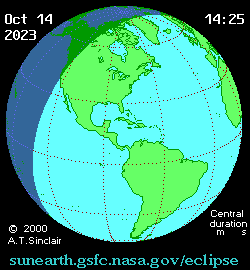
Unlike a total solar eclipse, where the moon blocks out the entirety of the sun, during an annular eclipse, a little light around the edges of the moon still creeps through.
That’s because annular eclipses occur when the moon is a bit farther away from the Earth in its orbit. That extra distance makes the moon appear to be slightly smaller than the sun, allowing a bright halo to cast around it.
This is where the “ring of fire” name comes from. These eclipses look like this. Cool, right? (But don’t stare into it directly. More on that below.) It’s a somewhat rare sight. There will only be 12 more annular eclipses this decade, spread across the globe.

In the United States, the eclipse will be visible (weather permitting) from parts of Oregon, California, Idaho, Nevada, Utah, New Mexico, Texas, Colorado, and Arizona, according to NASA.
The eclipse will begin in Oregon at 9:13 am Pacific Time, and end in the US in Texas at 12:03 pm Central Time, before crossing over Mexico, Belize, Honduras, Nicaragua, and beyond to Brazil.
Check the map below for information about when the path of the eclipse will cover your area of the US. Only people located in the shaded band will see the full ring of fire.
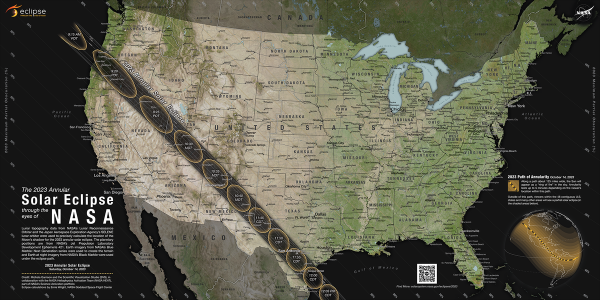
Or better yet, go to NASA’s eclipse website, which has a nifty interactive feature. On their page, you can click anywhere within the path of the eclipse and get precise times for when the sky show begins and ends in your exact location.
For those who can’t make it to the path of the eclipse, NASA will provide a live broadcast. You can watch that below.
And if you’ve read this far and are still wondering — “Why and how do solar eclipses happen?” and “When will the next one be?” and “How do I view this without burning my eyeballs out? — we’ve got you covered:
Why do we have solar eclipses?
There’s a simple answer: The moon occasionally covers the sun in its path across the sky. But it’s more complicated than that. Three cosmic conditions have to be met to produce the shadow.
1) There has to be a new moon
One side of the moon is always lit by the sun, but the lit side isn’t always facing the Earth. This is how we get the phases of the moon. For a solar eclipse to occur, it needs to be in its “new moon” phase.
During the new moon, the dark side of the moon is directly facing the Earth.

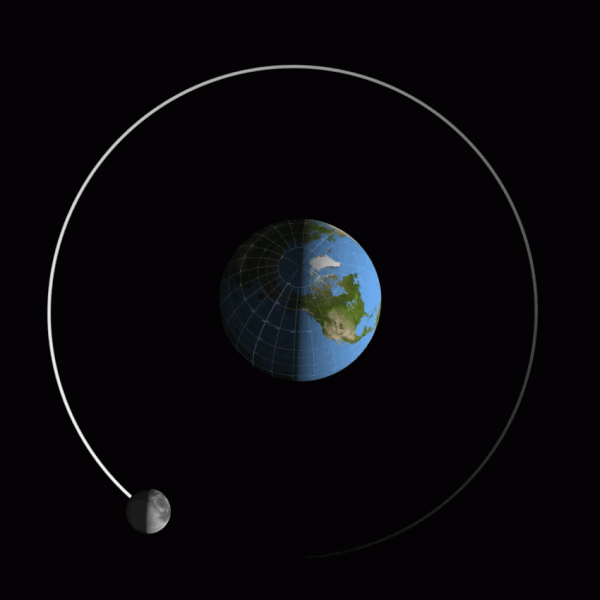
2) The moon has to cross the plane of Earth’s orbit
If the dark side of the moon has to be facing the Earth for a solar eclipse to occur, why don’t we have them every new moon? That’s because the moon’s orbit isn’t perfectly matched up with the Earth’s.
And that’s because the moon is tilted on a 5-degree axis (no one is completely sure why the moon is slightly skewed, but it might have to do with how it was likely formed: from a massive object smashing into Earth).

This means during most new moons, the shadow misses the Earth.
But there are two points in the moon’s orbit where the shadow can fall on the Earth. These are called nodes.
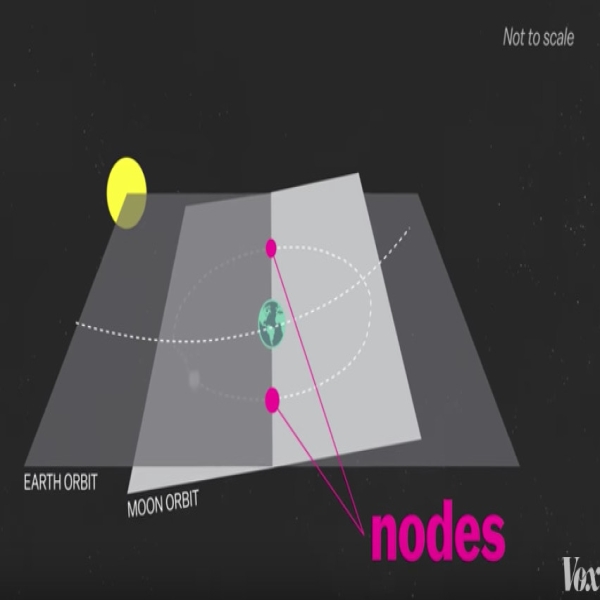
For a total eclipse to occur, the moon needs to be at or very close to one of the nodes.

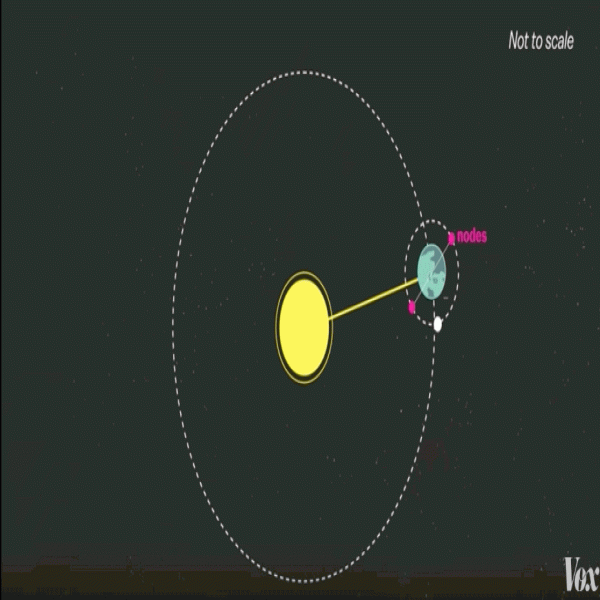
3) The moon’s distance to the Earth
You might remember this from middle school science: The moon’s orbit around the Earth is not a perfect circle. It’s an ellipse.
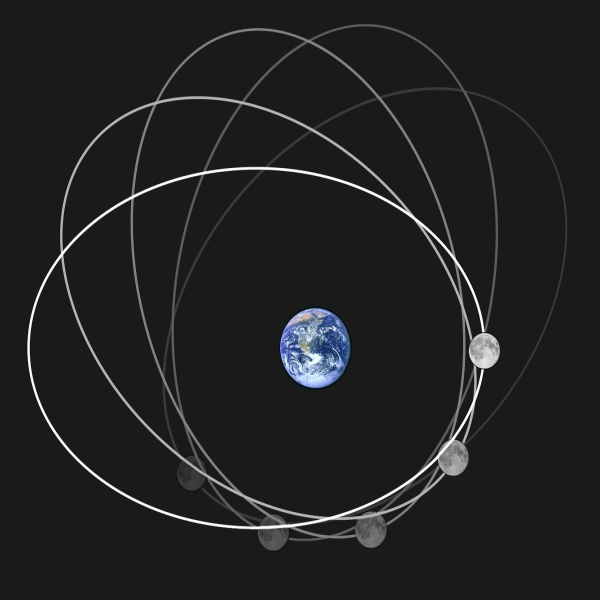
There’s a point in the orbit where the moon is farthest away from the sun and a point where it’s closest. For a total eclipse to occur, the moon needs to be near its closest approach to Earth.
If the eclipse occurs when the moon is close, it will totally block out the sun. If it’s farther away, we get a ring of fire.
If you’re going to observe the eclipse, be careful!
On a normal day, staring straight into the sun can harm your eyes. An eclipsed sun is no different.
NASA warns: “It is never safe to look directly at the sun’s rays.” The intense light from the sun can damage your retina and cause a “permanent scotoma or ‘blind spot’ in the central vision,” according to the Lancet.
The intensity of light radiating from a partial or annular eclipse can still cause retinal damage. “Even when 99 percent of the Sun’s surface (the photosphere) is obscured during the partial phases of a solar eclipse, the remaining crescent Sun is still intense enough to cause a retinal burn, even though illumination levels are comparable to twilight,” NASA explains.
The safest way to observe an eclipse is indirectly — either by projecting it onto a screen through a pinhole or by looking through a specially designed filter.
If you miss this eclipse, there’s another one coming in 2024
If the weather doesn’t cooperate tomorrow (you can’t see an eclipse through clouds) or if you can’t make it to the path of the shadow, you’re not entirely out of luck. There’s another eclipse coming to the US in 2024. And that one will be a total eclipse, where the moon blocks out the entirety of the sun, creating a truly awesome view. During total solar eclipses, you can see the sun’s ethereal corona — its atmosphere — with the naked eye.
It will occur on April 8, 2024, and pass over much of the Eastern United States. Mark your calendars.
Source: vox.com






